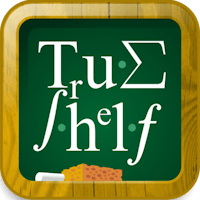As a teacher, mathematician and cyclist, TrueShelf CEO and founder Dr. Shiva Kintali knows from experience that not everyone moves at the same pace when learning—whether inside the classroom or out. Last year he launched an idea that he hopes will help keep students from falling behind in any subject they study, starting with mathematics.
While studying computer science at the Indian Institute of Technology Kharagpur in West Bengal, India Kintali fell behind in a course on complexity theory (which is too complex to explain here). Rather than rush to catch up, he opted to move through the textbook at his own pace so he could truly understand the concepts. The experience inspired Kintali’s love for complexity theory, which he continued to study while pursuing his PhD. It also sparked his belief that textbooks could evolve from something static into more fluid resources that adapt to students’ readiness levels.
Kintali’s answer to the evolution of the textbook is TrueShelf, an adaptive learning platform that lets students learn mathematical concepts by helping them solve an unlimited number of math problems and real-world puzzles that get progressively harder as their skills develop. The artificial intelligence-powered platform identifies students’ strengths and weaknesses and guides them interactively.
Kintali spoke with EdSurge about why he created TrueShelf, why technology can never replace teachers, and what led him down this path in his career.
EdSurge: What prompted you to develop an adaptive approach to learning math?
Shiva Kintali: As a teaching assistant at Georgia Tech and while teaching at Princeton, I developed an interest in helping my students learn mathematical concepts in a fun and intuitive way. I observed that students have different readiness levels, but the way we teach is week-by-week lectures with homework. One of the main assumptions here is that this kind of teaching style—which is one size fits all—is helping everybody. But if you misunderstand some concept in the early weeks, then any future concept that builds on that previous concept . . . . You’re going to get it wrong.
When I was teaching in Princeton’s computer science department, I manually looked at all the students’ homework solutions and analyzed their common mistakes. Then I would expand on those concepts more clearly in the next class. This improved students’ performance in the subsequent homework problems. I repeated this process every week.
TrueShelf is aimed at giving students, teachers and parents an adaptive learning platform that intelligently automates this entire process. Students get to practice problem-solving and teachers and parents get detailed feedback on where the class is succeeding or struggling.
Also, I play video games and I see an interesting pattern between them and learning math. The way games are designed, you start from a very basic level using some very basic skills. As you are mastering these skills, more and more features are unlocked and you go to better and better levels. And as you’re progressing to the next level, more and more tools are available to you. This inspired me to find a way to make learning as adaptive and addictive as video games.
In TrueShelf’s platform, as the user is learning the concepts we make sure that they master some of the basic skills thoroughly and then unlock advanced topics and exercises. This leads naturally to an adaptive learning process.
Why the urgency to help all students learn and understand math concepts?
If you look at the way we are advancing as a world, technology is playing an increasingly crucial role in our economic, social and political lives. Whether it is social networking, cybersecurity, stock trading, or dating apps—at the core of all these products are intelligent algorithms based on mathematics. Mathematical thinking is more important than ever and the bar is only getting higher. Over 80% of future jobs will require STEM skills.
How can an adaptive learning approach help?
Existing textbooks (even digital ones with videos and animations) assume one size fits all. There are only a limited number of exercises at the end of the textbook and after solving them, students don’t know whether they have mastered the concepts thoroughly.
The TrueShelf platform generates an unlimited number of exercises, so students can learn at their own pace, and see what they know and don’t know. We use a learning technique called spaced repetition where problems using basic concepts are revisited every day. Once students master those concepts, these types of problems will appear once every three days, and then once every week and so on. We increase the space between repetitions as the students master certain skills.
Our platform anticipates errors the students are likely to commit, encourages students by providing relevant hints, identifies gaps in their learning, provides immediate feedback and generates the next problem adaptively. This is the future of a smart textbook—dynamic, interactive and adaptive.
How is TrueShelf different from other adaptive learning platforms ?
The existing adaptive learning platforms generate only routine math problems under an assumption that the goal of education is the acquisition of knowledge by brute-force practice. I strongly believe that acquisition of knowledge is just the first step. Learning is not a destination, it is a journey. Our mission is to shape students’ mathematical thinking by helping them apply knowledge in creative ways.
For example, consider this 100 doors puzzle. It’s a math puzzle, but it does not use any routine mathematical terminology like greatest common divisor (GCD), lowest common multiple (LCM), etc. Our platform helps students uncover the hidden mathematical concepts in such real world puzzles. At every interactive step, the platform asks small questions and helps students actively think; it is much more exciting than passively watching a video solution to the puzzle.
What are some common misconceptions about the edtech industry?
The biggest misconception is that technology is going to completely replace teachers. Passionate teachers empathize with their students and motivate them by responding to students’ emotions. The brick-and-mortar schools, face-to-face learning, and teacher-student connection will continue to be an integral part of human learning.



